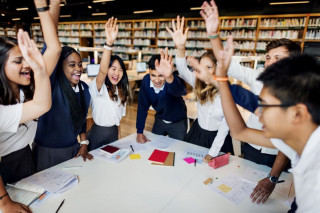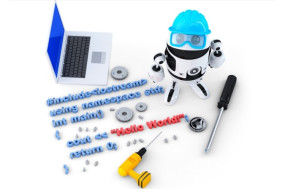- Your School Type
- Solutions
- Resources
- Blog
- Events
- More
- Contact Us
- Book a Demo
- Get a Quote

Have a look at our list of 10 activities that your school library can offer to help promote literacy and digital literacy.
Digital Compass is an award winning interactive “choose your path” animated game designed for Years 6-8 but suitable for older students too. It is a fun way to get older students role-playing scenarios where the online choices they make can have good or not-so-good outcomes.
The makers of the game suggest using Digital Compass to introduce students to the concepts of Digital Citizenship and then following up with 1 of their K-12 Digital Literacy & Citizenship 45-minute lessons.
Hector the dolphin learns some valuable lessons about safe online behaviour and digital citizenship in Hectors World. Suitable for early primary school students, the animated episodes and associated support materials, lesson plans, and classroom activities help to promote the skills and values young people need to grow into confident, knowledgeable and caring members of the online community.
Do you remember the Pokemon Go craze?
There’s were some very clever librarians who have managed to make the most of it and some could be tied in to your school’s literacy and digital literacy promotion.
A public library in Ontario devised an offline Pokemon Go scavenger hunt in the library that eliminated the need for kids to use the app. It’s an easy way to get students wandering around the library discovering books they might never have thought to read.
Blogger Mrs. Karpiuk has also designed some clever free Pokemon inspired Digital Citizenship posters which she has made available for download that you could use to decorate the library as part of your digital literacy lessons.

In 2016, Softlink hosted a webinar with Ian Wedlock from Code Club Australia who spoke about how maths, science and technology skills are improved by coding lessons. Have a listen to our webinar and visit Code Club Australia’s website to find out more.
The process of writing poetry can be very daunting to students, but have you heard about Newspaper Blackout Poetry? The trend is based on the book “Newspaper Blackout” by Austin Kleon and although the end result might look like something from a heavily censored CIA file, it can lead to some creative outcomes.
All you will need are some newspapers and a black Sharpie.
Have a watch of this quick tutorial on how to make a newspaper blackout poem
Alphabet sensory play is great for younger students who are still learning about shapes and numbers. Have a look at these fantastic and affordable sensory play projects that can be set up in your school library for some learning to read fun!
Young kids love a good sing along. The Library Adventure blog has put together 5 Library-Themed Songs to Promote Literacy Skills that you could teach students during National Literacy and Numeracy Week.
Google Lit Trips uses Google Earth to take students on a virtual journey to the places featured in famous literature. As students take their “journey”, they can explore additional resources that help them to immerse in the book. The website has created a number of trips already and they are divided into K-5, 6-8 and 9-12 titles so there is something here for every age group.
You can access existing Lit Trips at www.googlelittrips.org or learn how to build your own Lit Trip on the Sweet Integrations blog.
The CRAAP test stands for Currency, Relevancy, Authority, Accuracy, Purpose and Nicole Pagowsky has outlined her meme-themed CRAAP test on her blog
Although Nicole provided the lesson to college students to teach them about how to evaluate digital resources, the lesson could easily be adapted to senior high school students to build digital literacy skills.
Promote your library, your books, your online resources, events, and activities!
With a customisable, easy-to-use home page, Oliver makes it easy to:
What better way to promote books than through peer review and recommendations? Oliver enables students to review books they’ve read and give star ratings.
And with Orbit, the junior and middle school interface, younger students are encouraged to engage with reading and the library.
Editors note: This blog was originally published in August 2016, updated in October 2021 for freshness, accuracy, and relevancy.